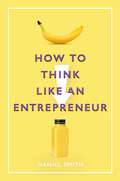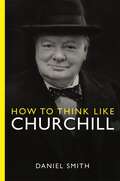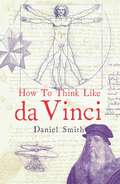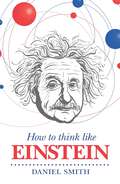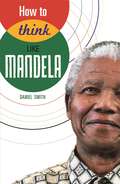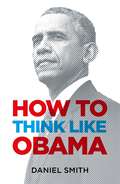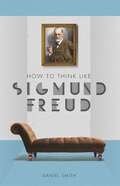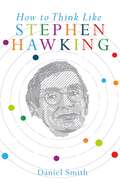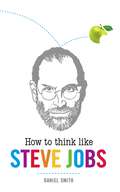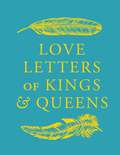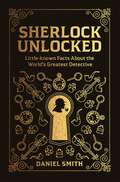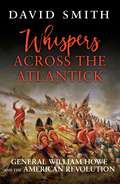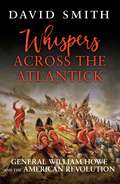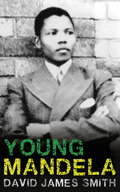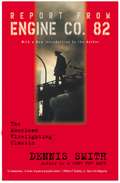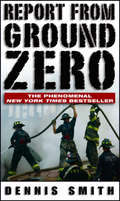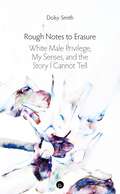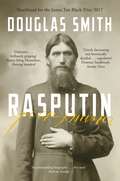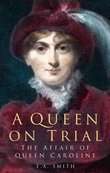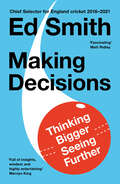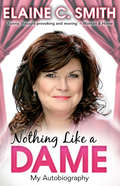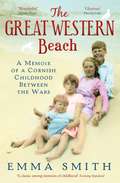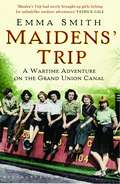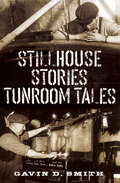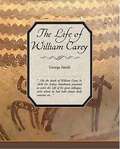- Table View
- List View
How to Think Like an Entrepreneur (How to Think Like ...)
by Daniel SmithFrom Andrew Carnegie and Oprah Winfrey to Steve Jobs and Sunil Mittal, this book will teach you how to think like the best minds in the business. Drawing on the stories, experiences and words of iconic business figures from around the globe and across the years, each chapter deals with a specific aspect of entrepreneurship and the lessons they can teach us, such as: – If you want to become big, you need to think big– Don't forget what makes your business scalable in the first place– Prepare your company for growing pains– Try to predict what lies ahead, but remember Warren Buffet's wise words: 'Forecasts usually tell us more of the forecaster than of the future' Informative, educational, thought-provoking and packed full of words of wisdom from and about the world's best entrepreneurs, How to Think Like an Entrepreneur presents the ideas and methods of the business greats, allowing the reader to expand their understanding of what drives and informs successful entrepreneurship.
How to Think Like Churchill (How to Think Like ...)
by Daniel SmithLooking at defining moments in Winston Churchill’s life and revealing his key principles, philosophies and decisions, this book will teach you how to think just like Churchill.Remembered for his leadership during the Second World War, Churchill’s commitment to 'never surrender', as well as his stirring speeches and radio broadcasts, helped inspire British resistance to the Nazi threat when Britain stood alone against an occupied Europe. As well as a hugely successful politician, Churchill was an officer in the British Army, a journalist, historian and a writer, winning the Nobel Prize for Literature in 1953. As one of the few voices warning about Nazi Germany in the 1930s, he returned to government to play his part in defeating Nazism, becoming one of the defining figures of the twentieth century. Studying how and why he accomplished what he did, how he overcame personal and professional adversity and stood strong in the face of overwhelming odds, with quotes and passages by and about the great man, you too can learn to think like Churchill.
How to Think Like da Vinci (How to Think Like ...)
by Daniel SmithFamed for creating some of the most iconic images in European art – including Mona Lisa and The Last Supper – Leonardo da Vinci has influenced generations of artists and thinkers, and continues to do so after more than 500 years. While we cannot hope to emulate his achievements, da Vinci showed an attitude towards life from which we can all learn.A true polymath, he was also a sculptor, architect, musician, mathematician, engineer and an anatomist and, with an unquenchable thirst for knowledge, da Vinci was never satisfied with what he had learned, frequently turning his mind to new, unexplored subjects. He saw links between art and science, and constantly pursued perfection and accuracy in his work, so that he developed many techniques we continue to use to this day. Combining these strengths with a unique imagination, da Vinci came up with designs for inventions centuries ahead of their time.In How to Think Like da Vinci, you too can learn to think like the Renaissance man, seize your opportunities, harness your talents, innovate and experiment and imagine the impossible. Read about this great man’s life and achievements and develop your understanding of one of the world’s most eclectic and extraordinary minds.
How to Think Like Einstein (How to Think Like ...)
by Daniel SmithA tantalising mixture of biography-cum-self-help book, this is an accessible, if unusual, analysis of Einstein's thinking- Good Book Guide.Best known as the creator of the world's most famous equation, E=mc2, Albert Einstein's theories of relativity challenged centuries of received wisdom dating back to Newton. Without his groundbreaking work in relativity and quantum physics, our knowledge of the cosmos might lag decades behind where it is today.But Einstein was not only an extraordinary scientific thinker. He was a humanitarian who detested war and tried to stem the proliferation of hitherto unimaginably destructive weapons that his work had in part made possible. He spent a lifetime fighting authoritarianism and promoting personal freedom, selflessly standing up to those who posed a threat to those ideals.He was also a bona fide superstar and was instantly recognizable to millions who had not the least understanding of the intricacies of his scientific theories. Even now, the image of the tussled-hair 'mad professor' poking his tongue out at the camera is familiar across the globe.In How to Think Like Einstein, you can explore his unique approach to solving the great scientific mysteries of his age.
How to Think Like Mandela (How to Think Like ...)
by Daniel SmithNelson Mandela is one of the few men alive who can say he has genuinely changed the world - how we think about our place in society among other ethnic, political and religious groups and how perseverance, moral conscience and honest dialogue can help us achieve anything. Throughout his long life, he has faced struggles against odds and opposition many of us can only begin to understand, was imprisoned for decades for his beliefs, yet ultimately stood by them and saw them vindicated by a nation.How to Think Like Mandela teaches us how he accomplished his achievements, his methods, his speeches, the many forms of opposition, both peaceful and non-peaceful, that he employed to reach his ends and why he fought in the way he did. Comprehensive and informative, this is the ideal book for admirers of this great man.
How to Think Like Obama (How to Think Like ...)
by Daniel SmithBe inspired by Barack Obama and learn how to think big with this unique insight into the mind of one of the world’s great influencers. Born to a black Kenyan father and white American mother, raised in Hawaii and, for a time, Indonesia, Barack Obama would typically never have been tipped for a future president of the United States, such was the world he was born into. But the path towards greatness and the choices he made along the way can be understood by an attitude that saw him take on any challenge – indeed, ‘Yes We Can’ became the all-inclusive slogan for his presidential candidacy.Riding a wave of positivity and hope for the future that swept him all the way to the Oval Office, Obama aimed to define his presidency as one that would provide opportunities for the many, not the few. With the price of change being gritty negotiation and compromise, Obama evolved the skills of a twenty-first century president which belied his relative inexperience to achieve the America that, as a young man, he had dreamed of. How to Think Like Obama reveals the motivations, inspirations and philosophies behind a man who broke the mould to challenge the status quo. With his thoughts on leadership, innovation, overcoming obstacles and fighting inequality, and with quotes by and about him, with this book you too can learn to think like Barack Obama.
How to Think Like Sigmund Freud (How to Think Like ...)
by Daniel SmithThe work of Sigmund Freud, one of the most important thinkers of the past two hundred years, redefined the fields of neurology and psychotherapy and the way we view the human mind. Most strands of the psychoanalytic discipline can even today be traced back to the leaps in understanding he made all those years ago.But his greatest success was to make the esoteric mainstream. The Oedipus complex, transference, the unconscious, repression, free association, the libido: these are all ideas and techniques from the Freud school of thought that have permeated the public consciousness. How to Think Like Sigmund Freud examines these and more in a quest to know one mind above all: that of a person who struggled with his own neuroses while attempting to understand those of others. Discover how the motivations and philosophies of a man who dared to tackle issues others feared to transformed what was a murky study into a real science. With this book you too can think like the man who came to comprehend the human condition better than any other.
How to Think Like Stephen Hawking (How to Think Like ...)
by Daniel SmithA unique insight into the mind of one of the world’s most extraordinary thinkers.Undoubtedly the most famous scientist on the planet and the very face of physics over the last half-century, Stephen Hawking is remarkable for many reasons. Not least because he has continued to strive to achieve so much while being hamstrung by debilitating illness. He has demonstrated categorically that if you put your mind to it, you can achieve anything, no matter your physical state.Of course, it helps if you happen to possess a mind such as his. His work on black holes put him on the map, and he became globally famous for his A Brief History of Time, communicating the most difficult scientific ideas at a period when he’d lost the ability to speak.How to Think Like Stephen Hawking reveals the key motivations, desires and philosophies that make Hawking one of the world’s most enduring talents. Studying how he overcame great adversity, fought his demons as well as his detractors and looked back to the origins of the universe, with quotes and passages by and about him, you too can learn to think like the man who claims he can think in eleven dimensions.
How to Think Like Steve Jobs (How to Think Like ...)
by Daniel SmithA titan of technological innovation, Steve Jobs thought differently to everyone else. He had the mercurial ability to know what people wanted before they knew it themselves, and what's more, he knew how to sell that idea. An advocator of good design in both function as well as appearance, his influence in Silicone Valley changed the way the world thinks about technology.But how did he achieve such success? What were his methods? How to Think Like Steve Jobs reveals the philosophies and carefully honed skills Jobs used in his journey to the top and in the consolidation of Apple's unique place in the public consciousness. With his thoughts on innovation, how to find inspiration, presenting an idea, advertising and much more, you can learn how to view the world through the eyes of a genius.The insights this book provides into the mind of the master will have you thinking like Steve Jobs in no time at all.
Love Letters of Kings and Queens
by Daniel SmithTender, moving, heartfelt and warm (and sporadically scandalous and outrageous too), these are the private messages between people in love. Yet they are also correspondence between the rulers of nations. From Henry VIII's lovelorn notes to Anne Boleyn and George IV's impassioned notes to his secret wife, to Queen Victoria's tender letters to Prince Albert and Edward VIII's extraordinary correspondence with Wallis Simpson - these letters depict romantic love from its budding passion to the comfort and understanding of a long union (and occasionally beyond to resentment and recrimination), all set against the background of great affairs of state, wars and the strictures of royal duty.Here is a chance to glimpse behind the pomp and ceremony, the carefully curated images of royal splendour and decorum, to see the passions, hopes, jealousies and loneliness of kings and queens throughout history. By turns tender, moving, heartfelt and warm (and sporadically scandalous and outrageous too), these are the private messages between people in love. Yet they are also correspondence between the rulers of nations, whose actions (and passions) changed the course of history, for good and bad.This morning I received your dear, dear letter of the 21st. How happy do you make me with your love! Oh! my Angel Albert, I am quite enchanted with it! I do not deserve such love! Never, never did I think I could be loved so much. Queen Victoria to Prince Albert (28 November 1839)
Sherlock Unlocked: Little-known Facts About the World's Greatest Detective
by Daniel SmithDaniel Smith looks behind what we think we know about the well-known sleuth and reveals little-known facts of which every Sherlock aficionado should be aware.Consulting detective Sherlock Holmes has been fascinating generations of readers, watchers and listeners for over 130 years, since he first appeared in print in 1887. Now an internationally renowned cultural icon, his name appears on books, films, television dramas, radio plays, stage adaptations and the rest right across the world and he is listed in the Guinness Book of World Records as ‘the most portrayed movie character’ in history. With all this material readily available, one might think there’s not much to find out about Sherlock, but in Sherlock Unlocked, Daniel Smith looks behind what we think we know about the well-known sleuth and reveals little-known facts of which every Sherlock aficionado should be aware. From the eccentric and odd characters to the bizarre plot twists, and from Conan Doyle to Moriarty, this book will appeal to Holmes’ fans old and new.Full of fascinating facts, such as:– The shameful addiction of Watson’s that Holmes kept secret – a dark gambling habit.– The part the legendary Langham Hotel played, in both Conan Doyle’s literary friendships – including with Oscar Wilde – and in the storylines he created for Holmes and Watson.– The Real Moriarty? The true-life London underworld thief-taker, Jonathan Wild, was a model for Professor Moriarty– Holmes's retirement passion was bee-keeping.– One of Conan Doyle’s childhood teachers, Eugene Chantrelle, became a notorious murderer.
Whispers Across the Atlantick: General William Howe and the American Revolution
by David SmithGeneral William Howe was the commander-in-chief of the British forces during the early campaigns of the American Revolutionary War (1775-1783). Howe evoked passionate reactions in the people he worked with – his men loved him, his second-in-command detested him, his enemies feared him, his political masters despaired of him. There was even a plot to murder him, in which British officers as well as Americans were implicated. Howe's story includes intrigue, romance and betrayal, played out on the battlefields of North America and concluding in a courtroom at the House of Commons, where Howe defended his decisions with his reputation and possibly his life on the line. The inquiry, complete with witness testimonies and savage debate between the bitterly divided factions of the British Parliament, gives Howe's story the flavour of a courtroom drama. Using extensive research and recent archival discoveries, this book tells the thrilling story of the man who always seemed to be on the verge of winning the American Revolutionary War for Britain, only to repeatedly fail to deliver the final blow.
Whispers Across the Atlantick: General William Howe and the American Revolution
by David SmithGeneral William Howe was the commander-in-chief of the British forces during the early campaigns of the American Revolutionary War (1775-1783). Howe evoked passionate reactions in the people he worked with – his men loved him, his second-in-command detested him, his enemies feared him, his political masters despaired of him. There was even a plot to murder him, in which British officers as well as Americans were implicated. Howe's story includes intrigue, romance and betrayal, played out on the battlefields of North America and concluding in a courtroom at the House of Commons, where Howe defended his decisions with his reputation and possibly his life on the line. The inquiry, complete with witness testimonies and savage debate between the bitterly divided factions of the British Parliament, gives Howe's story the flavour of a courtroom drama. Using extensive research and recent archival discoveries, this book tells the thrilling story of the man who always seemed to be on the verge of winning the American Revolutionary War for Britain, only to repeatedly fail to deliver the final blow.
Young Mandela: The Revolutionary Years
by David James SmithRuthless revolutionary; passionate womaniser; activist; hothead. Meet the young Mandela.Nelson Mandela has been mythologised as a flawless hero of the liberation struggle. But how exactly did his early life shape the triumphs to come? This book goes behind the myth to find the man who people have forgotten or never knew - Young Mandela, the committed freedom fighter, who left his wife and children behind to go on the run from the police in the early 1960s. But his historic achievements came at a heavy price and David James Smith graphically describes the emotional turmoil Mandela left in his wake.After meticulous research, and taking a lead from Mandela's trusted circle, the author discovers much that is new, surprising, and sometimes shocking that will enhance our understanding of the world's elder statesman. For the first time, we have evidence of a specific personal motivation for Mandela's fight against apartheid, and this book sheds light on the significant extent to which Mandela relied on white activists - a part of South African history the ANC has ignored or tried to bury. Sanctified, lionised, it turns out that Mandela is a human being after all, only too aware of his flaws and shortcomings. With unique access to people and papers, culminating in a meeting with Mandela himself, Smith has written the single most important contribution to our knowledge of this global icon.
Report from Engine Co. 82 (G. K. Hall Paperback Ser.)
by Dennis SmithFrom his bawdy and brave fellow firefighters to the hopeful, hateful, beautiful and beleaguered residents of the poverty-stricken district where he works, Dennis Smith tells the story of a brutalising yet rewarding profession.
Report From Ground Zero: The Story Of The Rescue Efforts At The World Trade Center
by Dennis SmithWhen disaster struck at the World Trade Center on September 11, 2001, Dennis Smith was among the first to arrive on the scene. Report from Ground Zero is his insider's account of the heroic efforts of the firefighters, police and emergency workers who rushed to downtown New York to face the greatest challenge of their lives.In all, 343 firefighters gave their lives. Entire companies were lost. Among the dead were a father and son; the department's beloved chaplain; commanders and rookies. Smith, author of the classic bestseller Report from Engine Company 82 and once described as 'the Poet Laureate of firefighters' by the New York Post, tells their stories and those of their families, the camaraderie in their companies and the massive recovery efforts following the catastrophe.As the world tries to come to terms with the horror of what happened, the firefighters' courage and fortitude in the face of enormous personal danger and bereavement offers a beacon of hope and redemption. Report from Ground Zero is a tribute to those heroes for our troubled times.
Rough Notes to Erasure: White Male Privilege, My Senses, and the Story I Cannot Tell
by Dolsy SmithWe are living through the wrack of the White Male. As the compact between social hierarchy, inherited privilege, and race (reinforced by gender and other normative categories) shows signs of buckling, his rage and resentment threaten us all. For he is a thing possessed: possessed by his own love of possession, and born to a sense that the world belongs to him and him alone. The spoils of oppression lie coiled inside him, a glut he can’t digest, and murder beckons behind the respect that he conceives of as his due." A hybrid of critical essay and memoir, and Rough Notes to Erasure contributes to a growing body of work that wrestles with the tacit and embodied nature of privilege and prejudice, and it contributes not only via argument but also through style. Taking inspiration from feminist/queer poetics and what Fred Moten calls “the black avant-garde,” these rough notes address the remainder that gets lost in explicit argument, which is the flesh. Where privilege roils through history, and empire whets the appetites. But also where the world catches on its own fractalization by thought, feeling, and desire; and language recovers, for a moment or two, the power to entangle us with our mother tongue.
Rasputin: The Biography
by Douglas SmithSHORTLISTED FOR THE JAMES TAIT BLACK PRIZENearly a century after his murder, Rasputin remains as divisive a figure as ever. Was he really a horse thief and a hard-drinking ruffian in his youth? Was he a a devout Orthodox Christian, or was he in fact a just a fake holy man? Are the stories of his enormous sexual drive, debauchery, and drunken orgies true or simply a myth? How did he come to know the emperor and empress and to wield so much influence over them? What was the source of his healing power? Was Rasputin running the government in the final years of his life? And if so, was he acting on his own or on the orders of more powerful, hidden forces? Did Prince Yusupov and his fellow conspirators act alone or were they other parties involved in Rasputin’s murder—British secret agents or even an underground cell of Freemasons, as has been claimed? And to what extent did Rasputin’s murder doom the Romanov dynasty? Drawing on major new sources hitherto unexamined by western historians, Douglas Smith’s book is be the definitive biography of this extraordinary figure for a generation.
A Queen on Trial: The Affair of Queen Caroline
by E A SmithChronicling as it does the breakdown of George IV's marriage to his loathed cousin Caroline, and his futile attempt to divorce her and deprive her of her royal rights and status, A Queen on Trial throws up fascinating parallels with Diana and Charles' acrimonious separation.
Making Decisions: Putting The Human Back In The Machine
by Ed SmithFor fans of Matthew Syed, this is a book about leadership, judgement and decision-making – rooted in the theory that helped Ed Smith lead the UK cricket team to international success.
Nothing Like a Dame: My Autobiography
by Elaine C Smith'How did I end up here?' A question Elaine C. Smith asked herself when sitting in the dressing-room of a top theatre in London's West End, about to go on stage with one of the UK's most successful plays.In Nothing Like a Dame, Elaine reflects on a 50-year journey that took her to the peak of the entertainment world. She recounts her long struggle to make it in a male-dominated, working-class society when women were supposed to just shut up and stay thin, especially in the sexist world of theatre and television, where she was told, 'Look, women just aren't funny.'Despite many highs and lows, she proceeded to forge a stellar career in show business, hosting her own TV series and becoming a household name thanks to her comic portrayal of Mary Nesbitt, the long-suffering wife in the award-winning BBC comedy Rab C. Nesbitt.Nothing Like a Dame is a heart-warming memoir: candid, outspoken, hilarious and at times deeply sad.
The Great Western Beach: A Memoir Of A Cornish Childhood Between The Wars
by Emma SmithThe Great Western Beach is Emma Smith's wonderfully atmospheric memoir of a 1920s childhood in Newquay, Cornwall. She recalls the rocks, the sea, the beaches, the picnics, the teas and pasties, the bracing walks, the tennis tournaments and bathing parties, the curious residents and fascinating holiday-makers - relishing every glorious, salty detail. But above all this is a portrait of a family from the astonishingly clear-eyed perspective of a nine-year-old girl: her furious, frustrated father, perpetually on his way to becoming a world famous artist but suffering the indignity of being a lowly bank clerk; her beautiful, unperceptive mother, made for better things perhaps but at least, with three fiancés killed in the Great War, married with children at last; the twins, fearless, defiant Pam and sickly, bewildered Jim, for whom life is always an uphill climb, and baby Harvey, brought on the same winds of change that mean that life, with all its complication and wonder, cannot stay still and the Cornish playground of Emma's childhood will one day be lost forever.
Maidens' Trip
by Emma SmithIn 1943 Emma Smith joined the Grand Union Canal Carrying Company under their wartime scheme of employing women to replace the boaters. She set out with two friends on a big adventure: three eighteen-year-olds, freed from a middle-class background, precipitated into the boating fraternity. They learn how to handle a pair of seventy-two foot-long canal boats, how to carry a cargo of steel north from London to Birmingham and coal from Coventry; how to splice ropes, bail out bilge water, keep the engine ticking over and steer through tunnels. They live off kedgeree and fried bread and jam, adopt a kitten, lose their bicycles, laugh and quarrel and get progressively dirtier and tougher as the weeks go by. Maidens' Trip is a classic memoir of the growth to maturity of three young women in the exceptional circumstances of Britain at war.
Stillhouse Stories - Tunroom Tales
by Gavin D. SmithIn this informative and entertaining series of interviews leading whisky writer Gavin D. Smith reveals the workings of the Scotch whisky industry in a series of interviews with characters who have lived and worked in the business of making Scotch. Some are nostalgic, harkening back to a former era when the Health & Safety mandarins did not exist, while other are contemporary and reveal how things work today. The 12 interviews are accompanied by black and white photographs of the participants along with archival illustrations not published before. Gavin's interviewees are: Norman Morrison, maltman and mashman, Talisker Distillery, Isle of Skye; Boyo Norquoy, stillman, Highland Park Distillery, Orkney; Jim Cryle, master distiller, Glenlivet Distillery, Speyside; Gordon Dey, brewer, Dallas Dhu Distillery & manager, Aultmore Distillery, Speyside; Rodney Burtt, trainee, Glen Mhor & Glen Albyn distilleries, Inverness; Douglas Murray, technical guru, Cambus Distillery, Clackmannanshire; Douglas Yeats, cooper, John Dewar & Sons, Perth; John Ramsay, blender, Famous Grouse & Cutty Sark, Perth & London; John Peterson, distillery designer and chemist, Loch Lomond Distillery, Alexandria; Ginger Willie, warehouseman, Bowmore, Islay; John Grant, proprietor, Glenfarclas Distillery, Speyside; Laing Brothers, independent bottlers and merchants, Glasgow
The Life of William Carey, Shoemaker & Missionary
by George Smith. . . On the death of William Carey In 1834 Dr. Joshua Marshman promised to write the Life of his great colleague, with whom he had held almost daily converse since the beginning of the century, but he survived too short a time to begin the work. In 1836 the Rev. Eustace Carey anticipated him by issuing what is little better than a selection of mutilated letters and journals made at the request of the Committee of the Baptist Missionary Society. It contains one passage of value, however. Dr. Carey once said to his nephew, whose design he seems to have suspected, "Eustace, if after my removal any one should think it worth his while to write my Life, I will give you a criterion by which you may judge of its correctness. If he give me credit for being a plodder he will describe me justly. Anything beyond this will be too much. I can plod. I can persevere in any definite pursuit. To this I owe everything. . .
